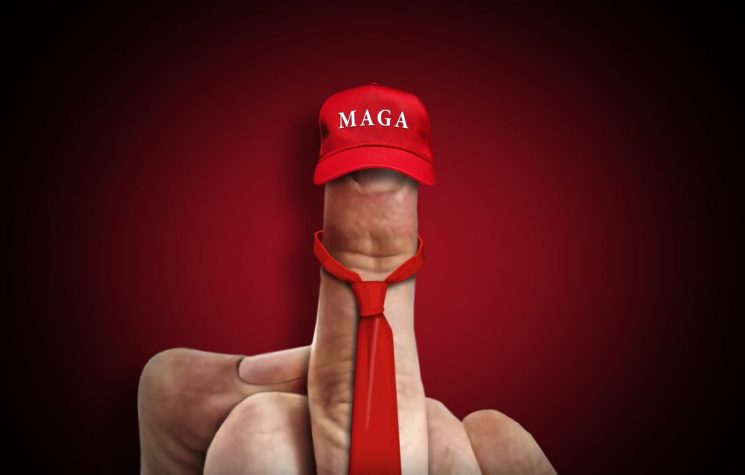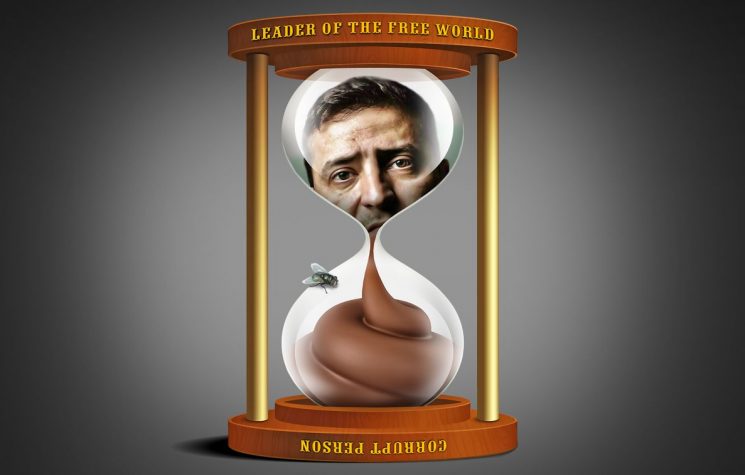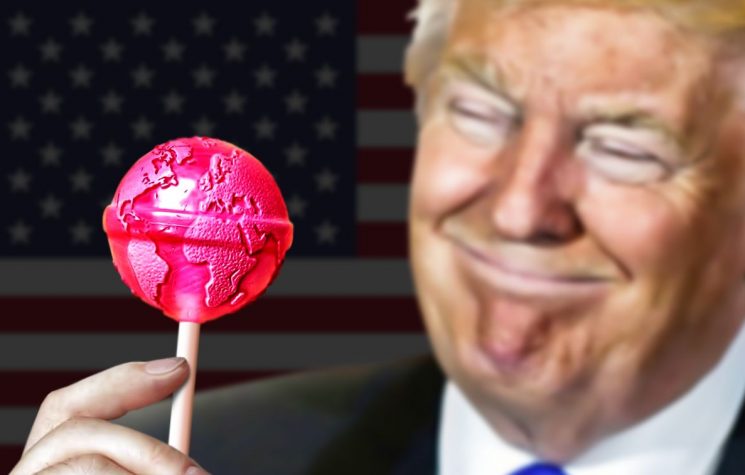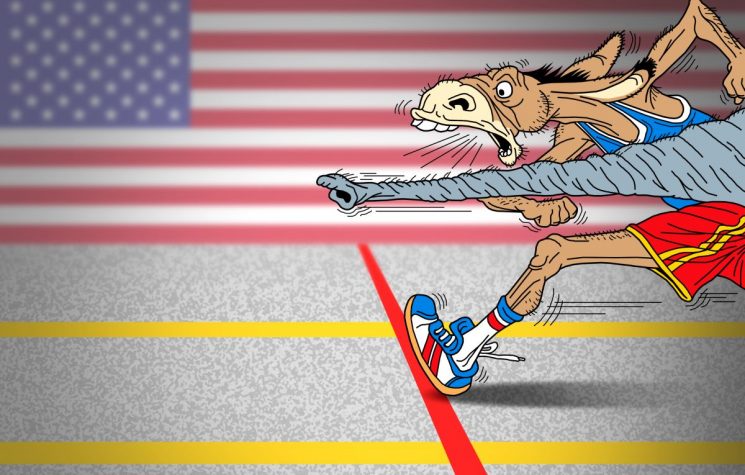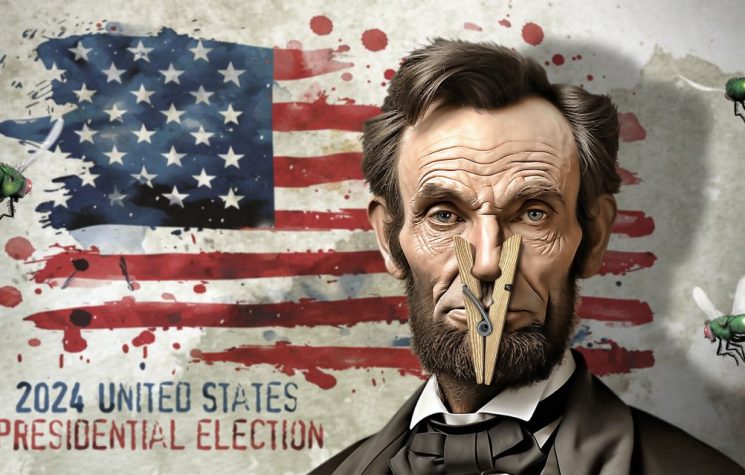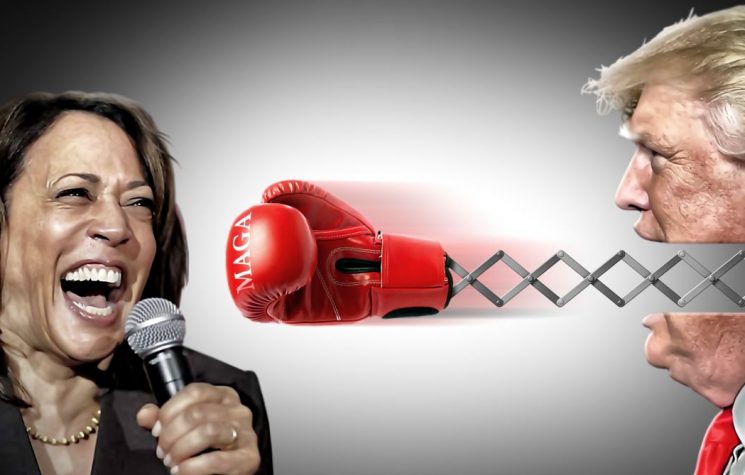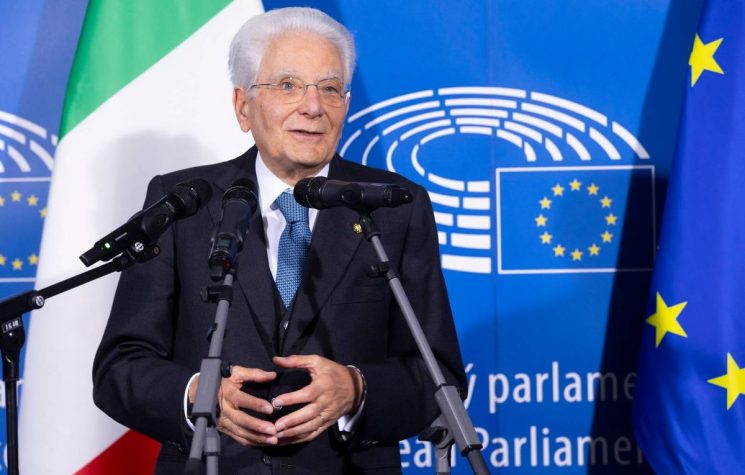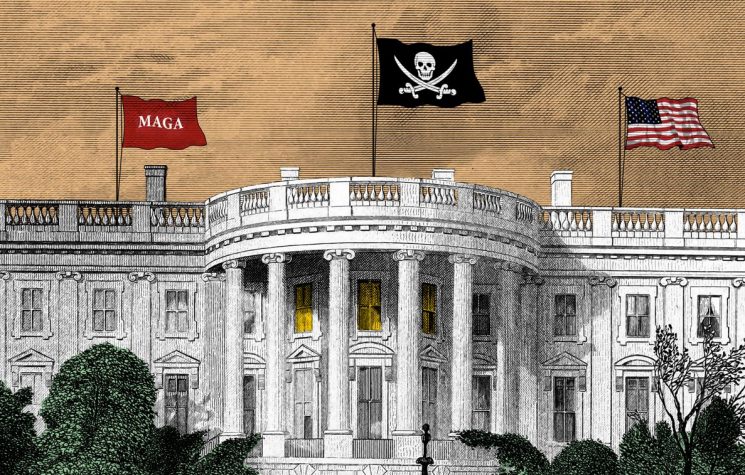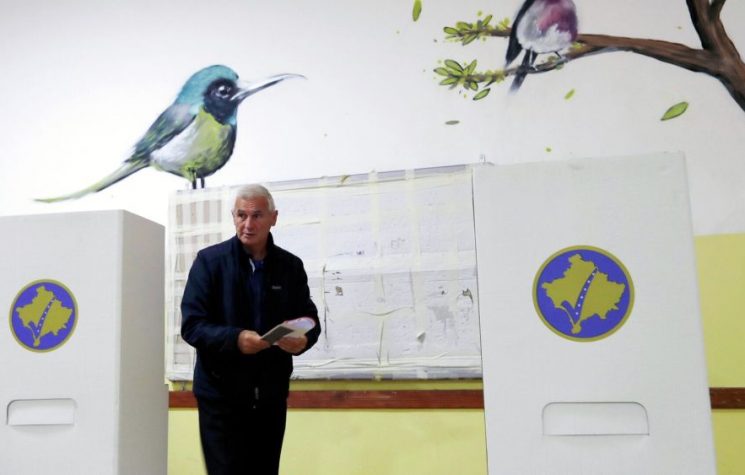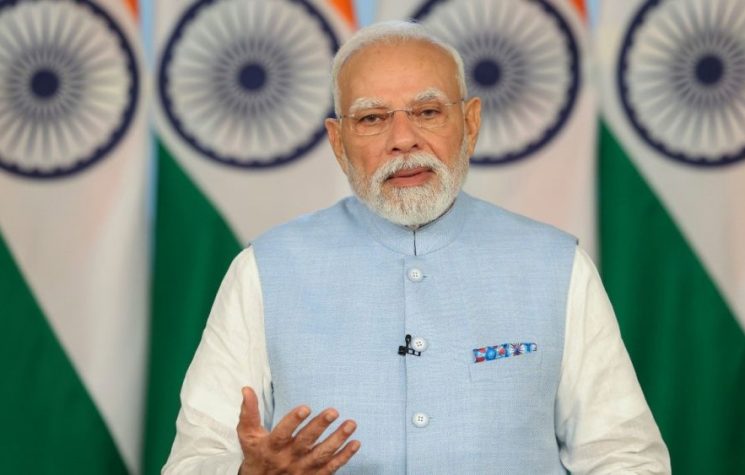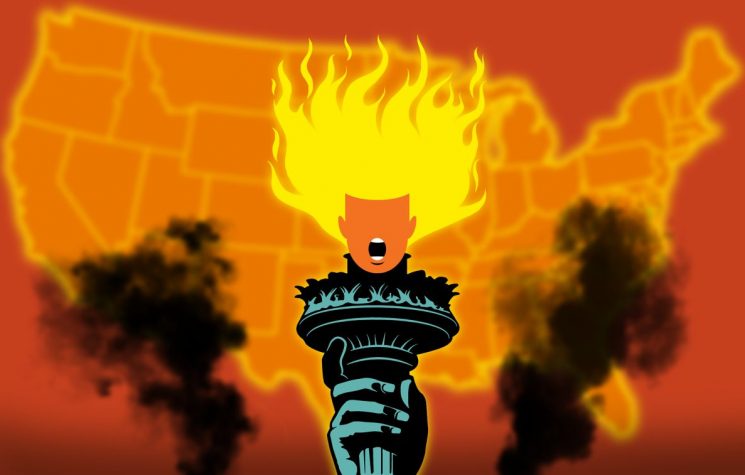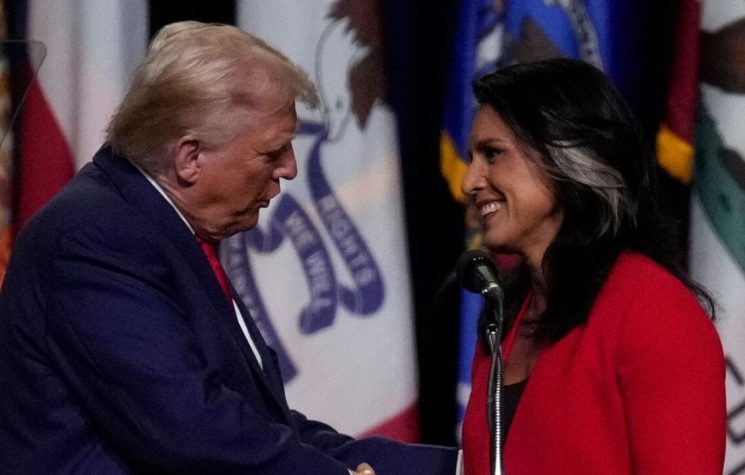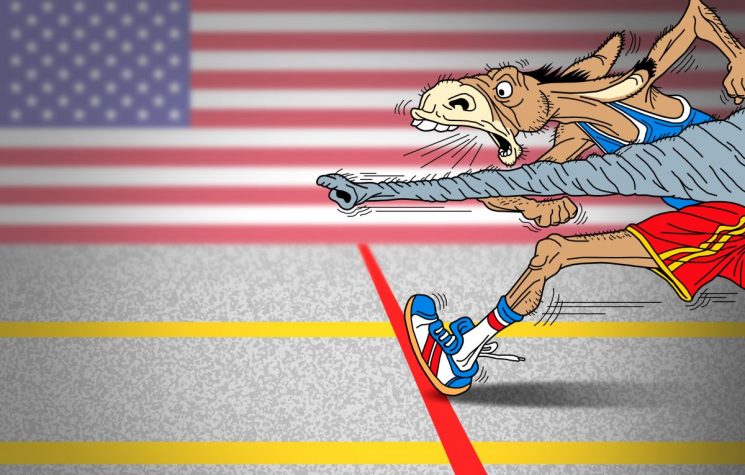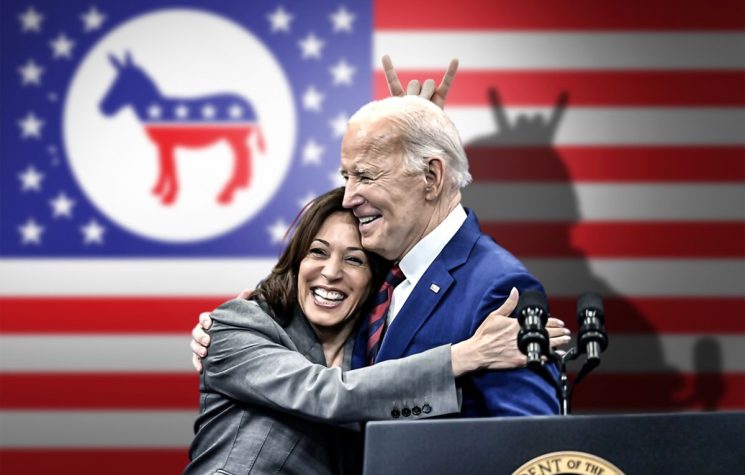Let’s ask a question that may sound incredible: is the U.S. falling behind other leading nations? The answer is: yes, it is.
Contact us: info@strategic-culture.su
A closer look at Trump and Harris’ views on the U.S. economy may reveal some striking similarities rather than extreme contrasts as propounded by most of the media narrative. Some main arguments, if reduced to crude terms, amount to assuring the electorate how much more money they will get into their pockets “if you vote for me.”
Both candidates represent fiscally irresponsible and hyper-interventionist policies. The aspects of falling behind other leading nations in technologies, education, and overstretched military efforts worldwide with minor exceptions are relegated to the background of this political confrontation. The concept of reform doesn’t even enter into their arguments.
Trump’s previous (2016-2020) economic policies in brief
A particularly curious case, as far as “cosmocrats” are concerned, was that of Republican President Donald Trump in his last administration. A filthy rich man with investments abroad but at the same time he declared his willingness to improve the lot of ordinary people. It must have been the case of conflicting loyalties in using his catchphrase: make America great again.
Let’s consider his actions. What did he change in the U.S. tax system? He reduced multiple tax brackets to four: 0%, 15%, 20%, and 25%. In addition, he eliminated the marriage penalty, the death tax and the alternative Minimum Tax. This proposal allowed President Trump to claim he provided the lowest tax rates since before World War Two. (1)
It may be claimed that the tax rates provided some help to the U.S. poor as under his plan those single earning less than $25,000 annually and less than $50,000 annually when married would pay no tax whatsoever. This was to apply to 75 million American households. Here anyone talking about fair income for all layers of society may become skeptical and assert: you are doomed to be very poor with that kind of annual income even if you don’t pay any tax!
President Trump sounded right noticing that a major beneficiary of his tax reform would be the U.S. middle class. Let him express it in his own words:
“The proposed policies will allow the middle class to keep most of their deductions while eliminating many of the deductions for the rich. With more money in middle-class pockets, consumer spending will increase, college savings will grow, and personal debt will decline.” [Trump 2015, p. 153]
At the same time, Trump did not forget about the rich. Since the tax rate for businesses of any size was to be 15% it was likely to make corporate inversions unnecessary and would make the U.S. one of the most competitive markets in the whole world.
As if it wasn’t enough, with an eye to the big business, his plan would require companies to bring their off-shore money back to the U.S. at the repatriation rate of only 10%. In his first electoral campaign, Donald Trump argued that off-shore money wasn’t being brought back because of too high a tax rate. The stakes were high as $2.6 trillion of foreign profits at the time were stashed in tax havens by American companies to avoid paying corporate taxes in the U.S. [Barton 2021, p. 135].
As far as foreign trade is concerned, Trump countered some essential aspects of the asymmetry associated with trade with China. He was convinced that there was one obvious thing of great importance as far as economic growth is concerned: economies grow when they produce more, and not when they consume more. In this case, cheap Chinese stuff imported to the U.S. works for the economic growth of China and works to the undoing of the American economy.
Trump advocated balance of payments policies and was not an isolationist. To get the hold of his anti-free trade argument one has to dissect two particular trade models within which: a) both trading parties trade freely and both benefit to a greater extent in economic growth; and b) they don’t trade freely and benefit to a lesser extend in economic growth.
Facing such options, U.S. economic nationalists siding with Trump chose the second scenario (focus on relative gains) as it delivers similar benefits to both countries and not the first one which allows China to grow possibly twice as fast as the U.S. Their choice would be contradicted by liberals who argue that the second scenario (focus on absolute gains) would make the U.S. more prosperous. This demonstrates that liberals view states as able to cooperate for mutual benefit and do not see one state’s gains as other state’s losses commonly referred to as a zero-sum game.
While reading the above it should not be forgotten that, to put it mildly, China and the U.S. are rivals. Therefore, acknowledging that China is catching up with the U.S. in an economic, technological and military sense to economic nationalists power could not be and should not be a zero sum!
During a meeting with the New York Times editorial board as early in January 2016, Trump said he would tax Chinese imports into the United States by 45%. Afterward, in his first term, there was an escalation of mutually applied tariffs within what was commonly depicted as a trade war with China.
In addition, Trump agreed with his advisers that security considerations should apply to several industries. It can be easily recalled that with the outbreak of Covid-19, the U.S. had no masks produced by its industries and had to organize massive and speedy purchases from China. Yanzhong Huang, a global health expert at the Council on Foreign Relations, reported in March 2020: “China is the largest exporter of medical devices to the United States, and about 80 percent of the active pharmaceutical ingredients in American drugs come from China and India. Chinese pharmaceutical firms have captured 97 percent of the U.S. market for antibiotics and more than 90 percent of the market for vitamin C. In 2018, 95 percent of ibuprofen, 91 percent of hydrocortisone, 70 percent of acetaminophen, and 40–45 percent of [the blood thinner] heparin imported to the United States came from China.”
Harris as part of Biden’s economic policymaking (2020-2024)
The Democrat Biden-Harris administration has announced several tax proposals to fund new government investments such as infrastructure, education and family programs as part of the Build Back Better (Building a Better America) agenda.
However, questions are mounting on whether or not she will choose to either distance herself or embrace the current administration’s “Bidenomics.” Let’s have a look just at a couple of Joe Biden’s claims.
Yes, let’s recognize it, it was President Joe Biden who suggested that millionaires pay not only a lower rate but “less in taxes” than other Americans.
Is it true?
Government forecasters estimate that those earning a million dollars or more in 2024 will pay an average of about $776,800 in federal income taxes, about 475 times as much as the average American taking home between $50,000 and $100,000.
As a percentage of income, for every dollar of income, the millionaire category will pay over more than 10 times as much in federal income taxes as their middle-income compatriots.
Whichever way you look at it, the rich directly pay a huge share of federal income taxes.
Another Biden electoral promise was that those making less than $400,000 won’t pay a penny more in federal taxes. Now, Harris if she wishes, may do away with it. Nevertheless, her anti-rich bias inherited from Biden is likely to prevail.
The “pay your fair share” malarkey may be a diversion meant to distract Americans from seeing just how big of a share the federal government is taking out of the economy.
Harris on the U.S. economy
Kamala Harris in her economic agenda carries forward many elements of President Biden’s tax vision while further expanding tax credits and incentives to lower costs for families.
Her major tax policy ideas include restoring and increasing an expansion of the child tax credit (CTC), expanding the earned income tax credit (EITC), and creating tax incentives for home buyers. She also proposes many other regulatory changes such as introducing price controls.
Her emphasis will be on easing inflation, fixing the housing market and slashing taxes for middle-income families.
Above all, her economic plans include eye-catching proposals such as a ban on grocery price gouging and a $25,000 subsidy for first-time home buyers.
Let’s take a closer look
First on price gouging and price fixing. According to Lindsay Owens, executive director of the Groundwork Collective, these practices are rampant in the food and grocery sector. There is still more the government can do to reduce food and grocery concentration and stop the cheating that is costing families dearly, he believes.
Nevertheless, some economists are skeptical and rejected the notion of corporate power as an important cause of inflation, and they even suggested that a limit on price hikes could result in shortages of goods.
Steven Hamilton, a professor of economics at George Washington University, told ABC News that most of the inflation over the past few years had been caused by an increase in costs. At the same time, Hamilton acknowledged that price increases for some groceries may be due to corporate concentration. He insisted that “most of the inflation over the past few years has been caused by increases in costs.”
Michael Jones, an economics professor at the University of Cincinnati, outlined a more dramatic scenario. He saw a government-imposed ceiling on prices as possibly causing stores to run out of goods in times of scarcity. He added: “If there’s a restriction on the prices that companies can charge for products, they simply won’t supply them.”
Fixing the housing market
In recent years, the housing market has suffered from a convergence of high mortgage rates and elevated home prices, shutting out prospective buyers with high costs.
The Harris campaign proposed restoring affordability through a combination of boosting home supply and easing the price pressures for some home buyers.
Economists who spoke to ABC News praised the Harris campaign’s effort to boost housing supply but offered differing opinions about the support for home buyers.
“The reason that housing prices have gone up in most places in America is that supply is limited,” commented the earlier cited Hamilton.
Some economists indicated that the subsidies for home buyers threaten to undermine the price cuts achieved through additional supply. Their argument runs as follows: “If prospective buyers know they’ll receive a subsidy of $25,000 from the government, they’ll boost their asking price by that amount, which would contradict the very purpose of subsidizing.”
Mark Zandi, chief economist at Moody’s Analytics, said the combination of supply growth and home-buyer support “could work effectively as long as Harris focuses on boosting supply before she bolsters consumers. You’ve got to put the horse before the cart.”
The tax cuts drew wide support from economists who spoke to ABC News though some emphasized the importance of accompanying those proposals with revenue-raising measures that will offset the tax reductions.
Harris and her Democrat vice-presidential running mate Tim Walz will “fulfill their commitment to fiscal responsibility, including by asking the wealthiest Americans and largest corporations to pay their fair share,” the campaign said.
Zandi, of Moody’s Analytics, voiced support for the tax cut but also urged caution about the potential loss of tax revenue. He stated: “If the tax credits end up adding to the national debt, it would undermine the savings for consumers by risking an increase in overall inflation.” He further elaborated: “I don’t think you can do anything without it being paid for… That would be counterproductive.”
Indeed, being paid for is extremely important for the nonpartisan Committee for a Responsible Federal Budget, which is focused on deficit reduction. The organization estimated in mid-August that the Harris plans would raise the federal deficit by $1.7 trillion over the next decade, if not paid for. In the case of Trump tax cuts, it could add $7 trillion to the deficit over a decade, only some of which would be offset by tariffs or a repeal of tax breaks signed by Biden.
Economists warn that higher deficits could stoke more inflation. Let’s recall that the Harris-Biden hidden tax of inflation has cost the average American family an extra $28,000+ paying for the increased cost of living. The data was provided in a report by the Joint Economic Committee that tracked the inflation rate from January 2021, when Biden entered office, until July this year.
Similarities and differences in Trump and Harris economic programs
Let’s start with trade policy. Trump advocates the imposition of an across-the-board 10% and then 20% tariff on imports to the U.S., on top of those already in place. As political economist Veronica de Rugy points out, vice-president Harris embraced a “worker-centered” trade policy that resembles to Trump’s “America First” approach.
In essence, both Trump and Harris aim at protecting already existing jobs and industries and are ready to accept higher prices and losing their competitive edge. It doesn’t matter that Harris hasn’t specifically named how high her tariffs would be under her presidential leadership. What counts is having an opportunity to attack and discredit her rival. So she rages on: “Mr. Trump’s tariffs would amount to a Trump tax on gas, a Trump tax on food, a Trump tax on clothing, a Trump tax on over-the-counter medication.”
Trump suggests things the other way around. He said he would direct his cabinet to somehow bring down the cost of car insurance in the first 100 days of his presidency, or possibly even the first week. He said he would cut energy prices in half. As a measure to ease housing prices, he would deport millions of immigrants. To what extent is he bluffing?
Harris accuses him of introducing a national sales tax – a Trump tax – which would raise prices because of his 10% tariffs to nearly $4,000 a year. It is not clear where she got this figure from. Brookings Tax Policy Center recently estimated that middle-income households would pay only about $1,350 more. She juxtaposes Trump’s proposal with hers. So she claims that “instead of a Trump tax hike, we Democrats will pass a middle-class tax cut that will benefit more than 100 million Americans.”
For his part, Trump called her planned control of grocery prices socialistic or communistic and in vivid terms envisaged empty shelves in shops and supermarkets.
Harris and Trump policy overlap
One can single out two fiscal measures. They are against cuts in social security expenditure and they approve of doing away with taxing tips. In giving income tax worth $10 billion a year they kept in mind the relatively small share of the population working in tipped occupations and practical difficulties in assessing such a tax.
Given that the Social Security program is the largest single item in the annual federal government budget it cannot be explored within a few lines, giving an impression of being a non-problematic item simply because Trump and Harris do not foresee any lowering of it.
Deficit financing and the prospect of mega debt
In 2023, 21 percent of the budget, or $1.4 trillion, was spent on the Social Security program.
Federal spending is on an unsustainable trajectory and is the key driver of growing deficits and debt. Spending is growing faster than the economy. Raising taxes is not a workable solution because taxes cannot grow faster than the economic base in the long term.
The majority of the budget goes toward health, social security and defense.
To be exact, 24% of the budget goes for health, 21% for social security, 13% for defense. Amazingly, already 10% goes to cover interest rates of the debt. Regrettably, only 5% of the budget is used for education and only 1% for science and medical research.
Experts agree that federal spending is on an unsustainable trajectory, and is the key driver of growing deficits and debt. The essence of the problem is that spending is growing faster than the economy. Raising taxes is not a workable solution because taxes cannot grow faster than the economic base in the long term. In the past, Trump unlike Harris made some hints about cutting the cost of social services. Now he has no intention of doing anything like this. Why? Because he wouldn’t like to help Harris’ razor-thin lead become bigger. So both of them demonstrate their unison in deficit financing. The specter of mega debt doesn’t seem to scare them and their voters.
Tax the rich
It should be recalled that in her 2020 campaign as a senator for California, Harris proposed multiple changes to the tax code which included:
- Raising the top marginal income tax rate on the top 1 percent to 39.6 percent
- Implementing a 4 percent “income-based premium” on households making more than $100,000 annually to pay for her version of “Medicare for All”
- Creating a $3,000 refundable tax credit ($6,000 for married couples filing jointly) (the LIFT Act) for low- and middle-income taxpayers
- Raising capital gains tax rates to ordinary income tax rates, though it is unclear if Harris would do so only on a subset of taxpayers
- Raising the corporate income tax rate of 21 percent up to 35 percent
- Expanding the estate tax
- Imposing a financial transaction tax (FTT) on stock trades at 0.2 percent, bond trades at 0.1 percent, and derivative transactions at 0.002 percent
- Providing $2,000 per person per month for pandemic relief in mid-2020; one of the largest aid proposals, far surpassing what was eventually passed into law in December 2020.
Based on the above information, can anyone conclude that Harris doesn’t love taxing?
Harris’ proposals share similarities with the policies included in the fiscal year 2025 budget proposed by the Biden-Harris administration. The main area of change concerns the return to a 35 percent corporate tax rate, while the originally planned FY 2025 budget would take it to 28 percent as well as raising the top income tax rate on the top 1 percent of earners from 37 percent to 39.6 percent.
Importantly, Tax Foundation estimates that the major tax increase proposals in the Biden-Harris FY 2025 budget would reduce economic output by 1.6 percent and employment by 666,000 full-time jobs. Should Harris seek further tax increases in line with what she supported in the past, the economic losses would be even larger.
There might be more tax surprises in store for the rich with “Kamalanomics”.
Harris has been on record supporting a national wealth tax, which could significantly impact wealthy retirees. A wealth tax is a tax on a person’s net worth, typically when that net worth is above a certain amount. If a wealth tax is established, it could potentially mean double or triple the taxes for wealthy individuals.
In this context. it should be recalled that the U.S. has the most progressive tax system in the world and collects the largest share of taxes from the richest 10% of the population.
When imposing taxes on the very rich one should realize that it is one thing to make a decision to tax them more and quite another to be able to collect them. Overtaxed rich may take their money to tax havens or to invest them outside the U.S.
In the case of Trump, his actions during his first presidential term indicate he is not interested in increasing their taxes. Not only that, he came up with some innovative ideas. Namely, he suggested using the revenue from increased tariffs to pay for cuts in some levies, including the corporate income tax. He has also raised the notion of replacing federal income taxes with tariffs. He hasn’t provided enough details to assess how realistic his proposal is.
In this light, it may be worth taking into account the view of Kori Schake, a senior fellow and the director of foreign and defense policy studies at the American Enterprise Institute. Her prediction is as follows: “The characteristic of a Trump-Vance administration would be trade wars and trade barriers of the kind we haven’t seen since the 1930s. I mean, they’re talking about a 60 percent tariff on all imports, so that’s a 60 percent plus to the cost of everything Americans purchase.”
But the Democrats are fond of tariffs too. After all, in May this year, Biden and Harris introduced a 100% tariff on Chinese-made electric cars designed to protect U.S. manufacturers from cheap imports. Additionally, the White House was imposing more stringent curbs on Chinese goods worth $18 billion.
Falling behind
If we agree that education and innovation are key to the United States’ ability to project power, then the U.S. is steering toward uncertain waters. American K-12 education is in crisis. Students today are scoring worse on proficiency tests than they have in decades and falling behind their peers abroad. U.S. universities are struggling, too, as they face greater global competition for talent and chronic federal underinvestment in the basic research that is vital for long-term innovation.
In 2023, math and reading scores among American 13-year-olds were the lowest in decades, according to the National Assessment of Educational Progress. Half of U.S. students could not meet their state’s proficiency requirements. And scores on the ACT, the popular college admissions test, declined for the sixth year in a row, with 70 percent of high school seniors not meeting college readiness benchmarks in math and 43 percent not meeting college readiness benchmarks in anything.
In 1980, 78 percent of doctorates in computer science and electrical engineering awarded by American universities went to U.S. citizens or permanent residents. By 2022, it was only 32 percent. About one million international students now study in the United States each year. The largest share comes from China, at 27 percent.
According to the Program for International Student Assessment, which tests 15-year-olds worldwide, in 2022 the United States ranked 34th in average math proficiency.
Polls show that the share of Chinese students who prefer to study in Asia or Europe instead of the United States is rising. If the Chinese government were ever to restrict the flow of its students to the United States, many university labs and companies would be in serious trouble.
Overall federal research funding as a share of GDP has declined from its peak of 1.9 percent in 1964 to just 0.7 percent in 2020. China spent 1.3 percent of GDP on research in 2017. Didn’t Chinese President Xi say that by 2035 China will be the most technologically advanced country in the world?
The examples could be multiplied. Do the U.S. politicians do much to change such a humiliating state of affairs?
For instance, in 2022 under the Biden-Harris administration, the CHIPS and Science Act was supposed to reverse this downward slide by investing billions of dollars in science and engineering research. And what happened? The provisions of the act were later scrapped in budget negotiations.
On the other hand, as the Foreign Affairs editor Dan Kurtz-Phelan puts it, the Republican vice president candidate D.J. Vance is more focused (with Trump) on achieving $1.5 trillion in annual defense spending. Consequently, what is at stake is cutting off support for Ukraine for the sake of confronting China.
Previously cited Director Kori Schake predicts upheaval as far as deficit spending is concerned. She says: “I don’t see any consistent belief on the part of Donald Trump or JD Vance for the kind of spending necessary to produce the American military that they say they want, and their commitment not to cut a penny from entitlement programs, and to cut the deficit. Those three things are impossible simultaneously.”
Things must be uncertain for the U.S. if such a renowned member of the U.S. establishment as Condoleezza Rice allows the possibility of the future being determined by “revisionist” countries and not necessarily by the alliance of democratic, free-market states.
References
(1) D. J. Trump, Crippled America, Simon & Schuster, New York, November 2015
(2) Richard Barton, The End of the USA as We Know It, KnigIzdat, Moscow, 2021















